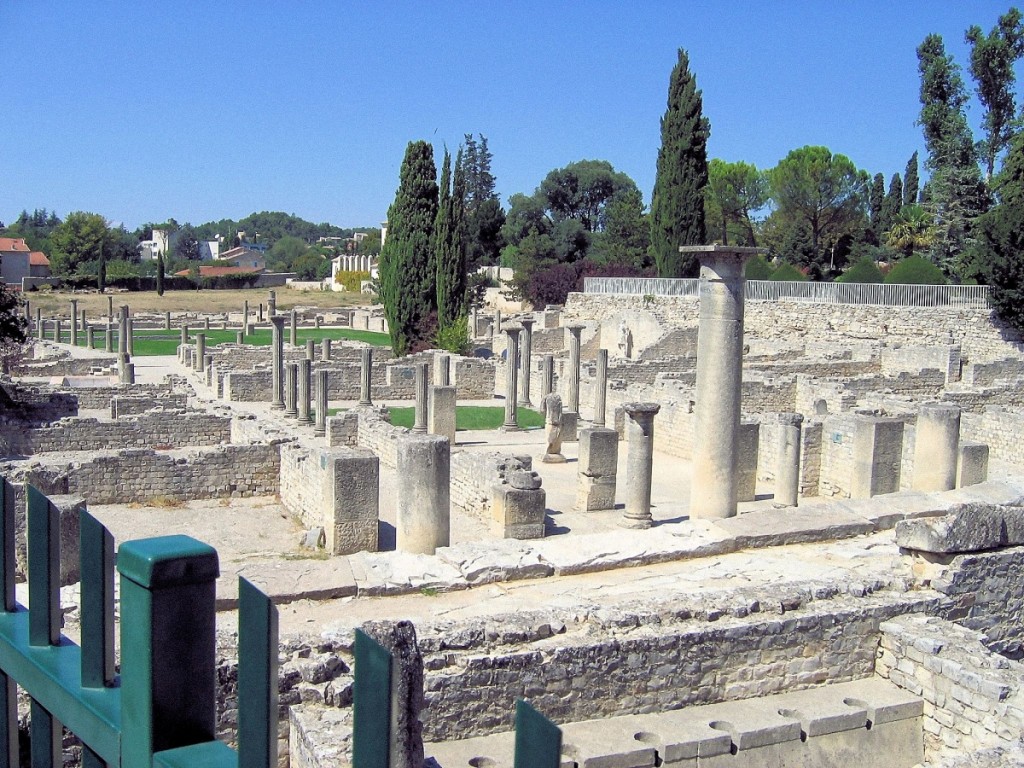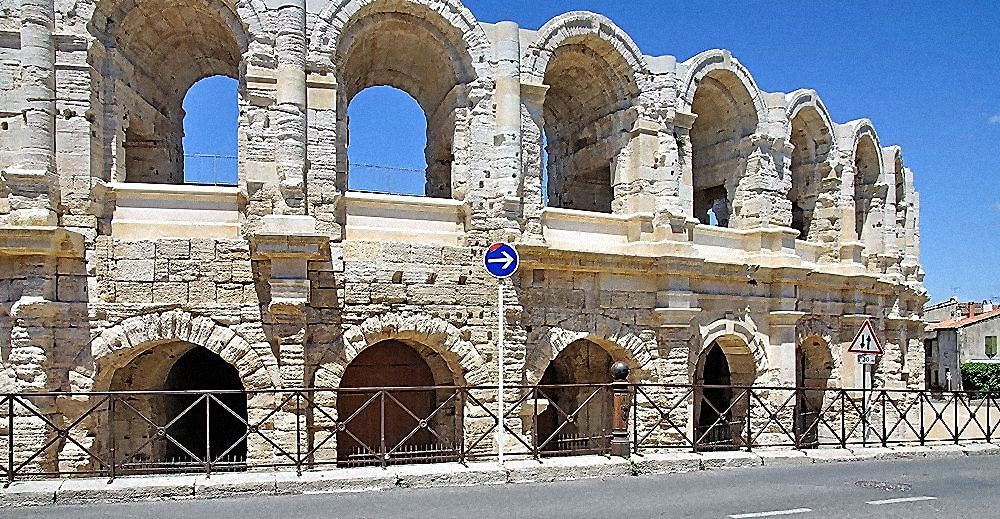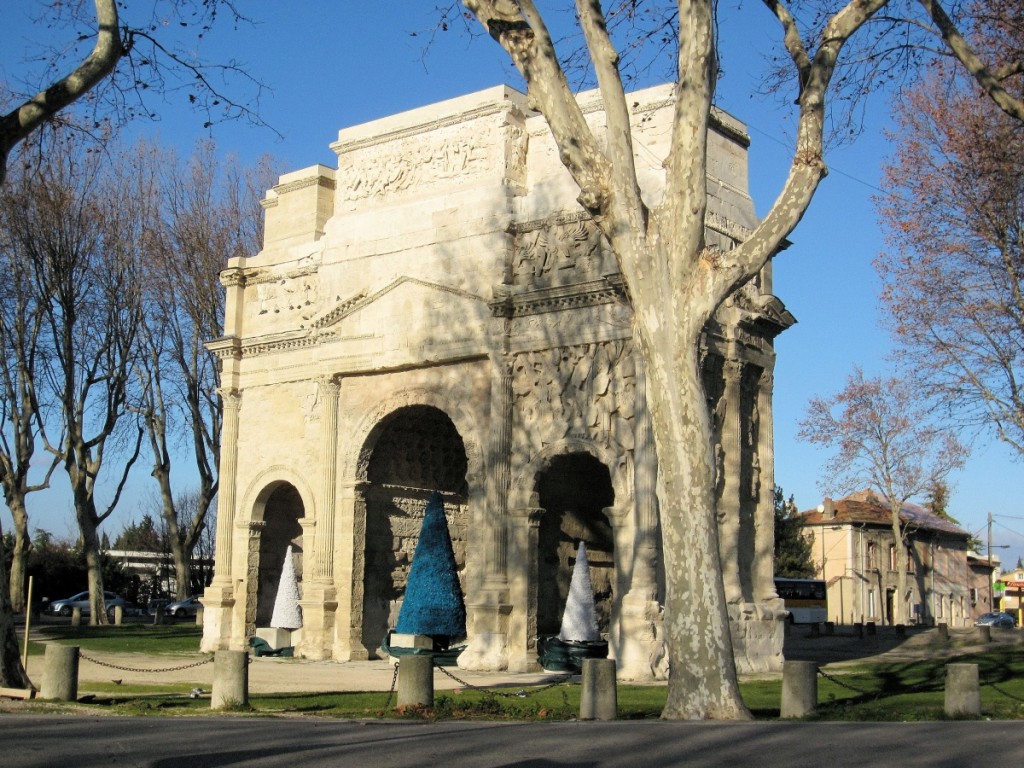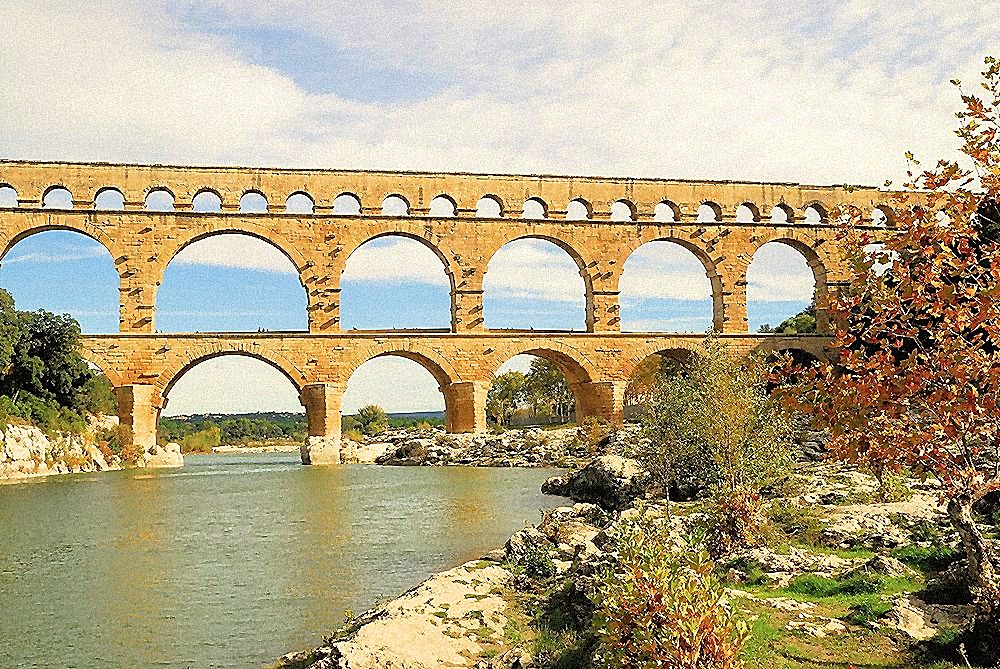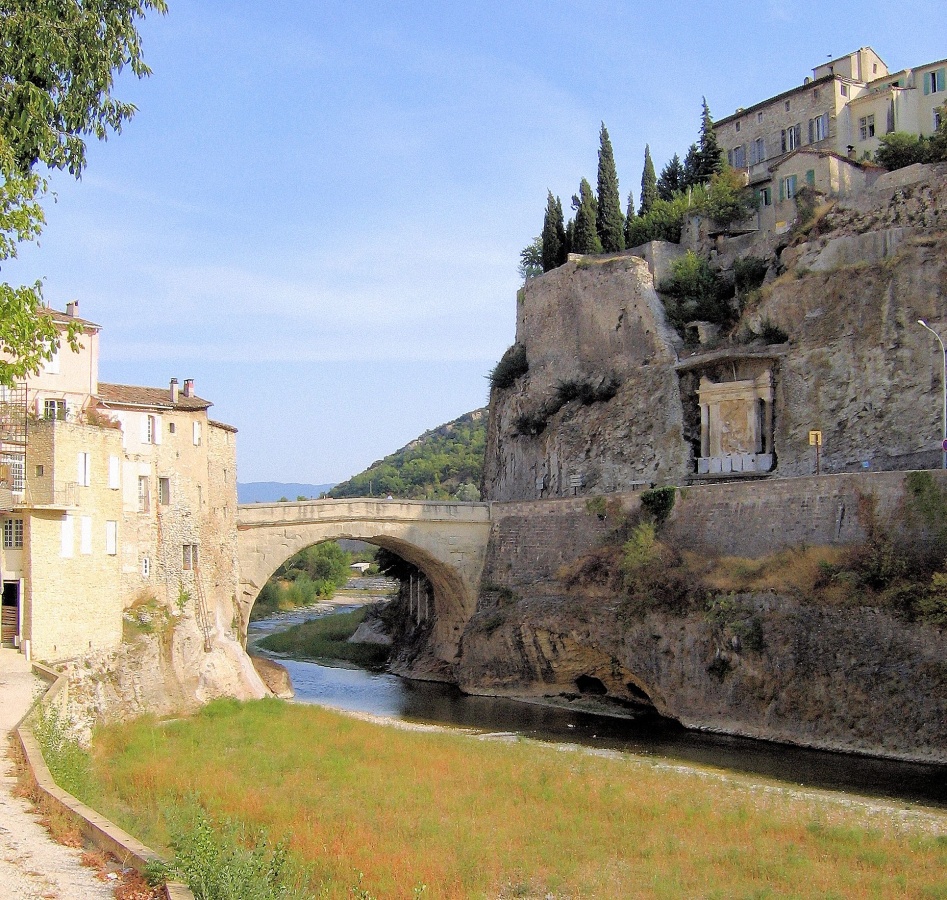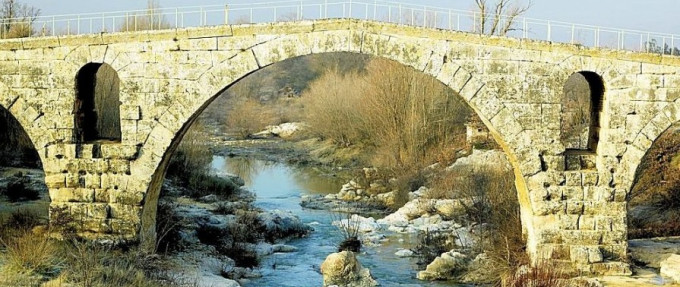
Provence In Roman Times
Beyond the fields of sunflowers, vineyards, lavender fields and olive groves, it is impossible to drive through the Provencal countryside without noticing the remnants of the Roman colonization of the area which began in 120 BC and continued for 600 years, until the second half of the 5th Century AD when they were displaced by the Visigoths. Evidence of Roman presence can be seen throughout the area, even in the smallest towns and villages. You will find yourself crossing an old Roman bridge at Vaison la Romaine, or Bedarrides or Pont Julien near Bonnieux where the bridge provided the river crossing for the ancient Via Domitienne. The Romans built roads to connect major cities in the Empire, some of which are still in use. Via Aureilienne was the major artery that connected Rome and Arles. It’s route passed Aix en Provence and Salon de Provence and today the RN 7 between Aix en Provence and Nice, follows the much of the same route, whilst in an area just east of Tourtour in the Var, a long section of this 1,700 year old road is still in use
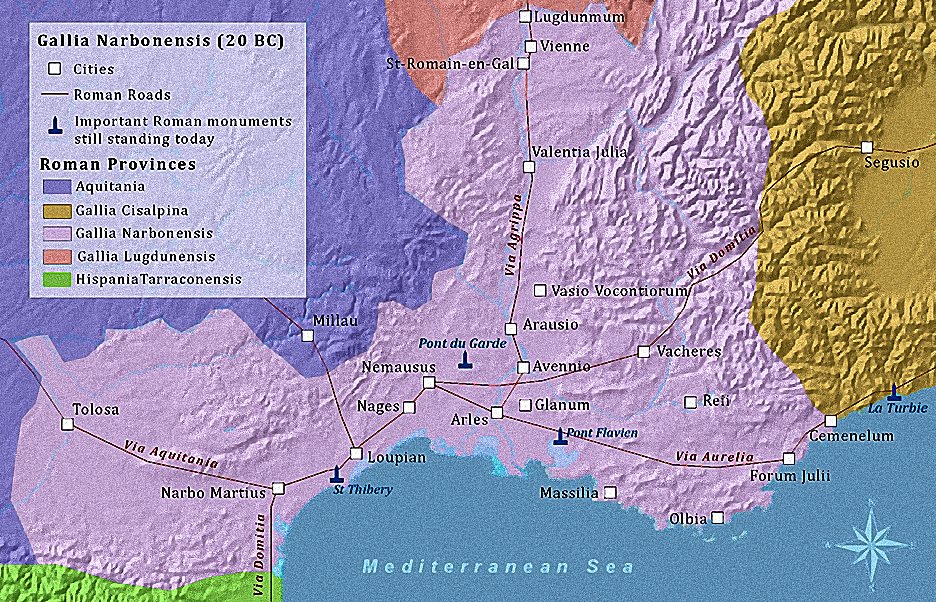
Map of Gallia Narbonensis showing Roman Towns and old Roman roads – image source – www.explorethemed.com
Rome established a foothold in the area when the inhabitants of Massilia (today Marseille), a Greek city at that time, asked for Rome’s help in battling the Celtic tribes of the interior. The newly established Roman Empire (125 BC), anxious to connect Italy to their newly won territories in Spain (a result of the wars with Carthage), was only too pleased to “help”, and by 120 BC, the Roman Empire had spread across the entire southern coast of what they then called “Transalpine Gaul” (France). Provence, as a sub region of Transalpine Gaul, first became known as Provincia Nostra. As the Empire spread throughout the Mediterranean, the name Provincia became confusing as there were many Provincae Nostrae, so it was renamed Gallia Transalpina for a period of time, before the Emperor Augustus finally named it “Gallia Narbonesis,” with its capital Narbo Martius – today’s Narbonne. This new capital was intended to divert trade from the still Greek and wealthy city of Massilia and the Rhone Valley.
Treating the Provinces as an extension of Rome, Emperor Augustus granted land in the Provinces to landless legionnaires as a reward for victories. They could settle with their families, so securing the territory for the Empire and work the land producing food and materials for sale in Rome. The facilities of each settlement were an important element in the stability of each community, therefore “mini Romes” were constructed in each settlement complete with theatres, baths, forums and arenas
The Second Legion were the recipients of the town of Orange for their heroic service during the Gallic wars. This town, which now carries the name of the royal family of the Netherlands, is home to two magnificently preserved Roman structures. In the middle of town is the Theatre Antique built just before the birth of Jesus Christ and is still in use today for the summer Cheorogies, where up to 7,000 spectators can be accommodated at any performance. Notable aspects of this theatre are its incredible acoustics and an enormous screen wall, which serves as a backdrop for performances. On the outskirts of the town, is an Arc de Triomphe – a monument to the Roman victories in the Gallic wars. Originally built on the Via Agrippa, today it is the majestic centerpiece of a very large roundabou
Nimes, or Nemausus as it was known in Roman times, was bequeathed to the Legions which fought and defeated Antony and Cleopatra at Actium. Very quickly, it began a transformation into a Roman town. Within the impressive city walls built to enclose nearly a square mile in area was an amphitheatre, a forum with temples and a watchtower. The best known of the Roman structures still standing in Nimes is the Maison Caree a Roman temple which served as the inspiration for Thomas Jefferson in planning the State Capital building in Richmond, Virginia. Today, it is a museum which is open daily to the public. The Arena, or Arenes, was modeled on the Colosseum in Rome and can seat up to 21,000 people. It is considered the best preserved Roman amphitheatre in the world, but it is still home to Provencal bullfights or tennis matches in the summer
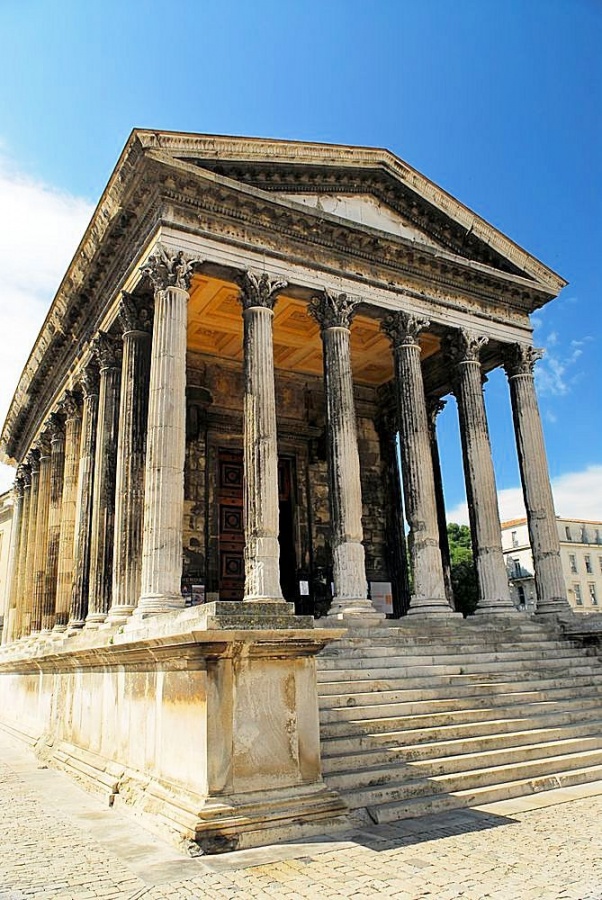
In Nimes, the Maison Carree is a Roman Temple which was the inspiration for Thomas Jefferson when planning the State Capital building in Richmond, Victoria
As the settlements in the south developed into a bustling towns with many prosperous residents, the need for a safe and steady supply of water began to grow. This resulted in one of the most impressive feats of engineering and construction of Roman times. The Pont du Gard, is a majestic three tiered structure that was built to traverse the Gardon River at a fifteen storey height. Construction of this structure was started in 50 BC and was completed in less than 5 years. It is built completely of hand cut stone blocks that took hundreds of men to hoist into position. It stands today as the second tallest Roman structure in the world and has withstood many, many floods that have washed away much newer bridges. The bridge and visitors center are open to the public daily. The bridge is quite often the backdrop for concerts and fireworks displays.
Just outside St. Remy de Provence, lie the ruins of the old city of Glanum, which contains among other vestiges, a forum and thermal baths. Opposite Glanum are the ruins of a mausoleum, and an Arc de Triomphe, which were constructed in approximately 30 AD.
Vaison la Romaine – the nearest large town to Sablet, was a very prosperous Roman center. Prior to its very gradual Roman conversion, it was the capital of a Celtic tribe – the Voconti. The Gallo-Roman city developed around the villas already built along the Ouveze River. The gradual Romanization of the town is credited for its success and stability. Vaison la Romaine became one of the richest cities in Gallia Narbonensis with numerous geometric mosaic pavements and a small theatre that has been refurbished and is open to the public. Roman vestiges can be seen throughout the town and the Visitor’s Center provides information on locating the various monuments.
During the second half of the 5th Century, the area went through a period of instability following invasions by the Germanic tribes – the Visigoths in the year 480, followed by the Ostrogoths, then the Burgundians and finally the Franks in the 6th Century. These invasions coupled with the waning of the Roman Empire and the power it exercised it the region saw the end of the Roman Era in Provence. The fact that so many structures and monuments have survived to this day, is a testament to the to quality of the workmanship of the times and the wealth and prosperity brought about during Roman times.
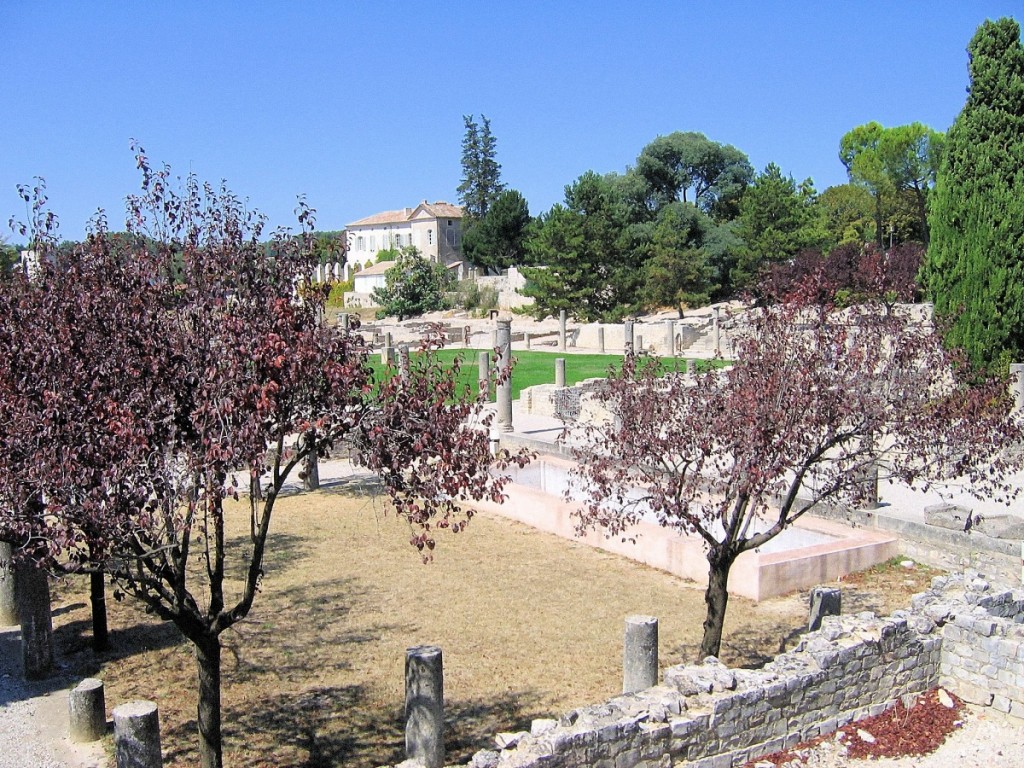
At Vaison la Romaine, Roman Vestiges show the pattern of the streets and the layout of the old Roman town
During the second half of the 5th Century, the area went through a period of instability following invasions by the Germanic tribes – the Visigoths in the year 480, followed by the Ostrogoths, then the Burgundians and finally the Franks in the 6th Century. These invasions coupled with the waning of the Roman Empire and the power it exercised it the region saw the end of the Roman Era in Provence. The fact that so many structures and monuments have survived to this day, is a testament to the to quality of the workmanship of the times and the wealth and prosperity brought about during Roman times.


